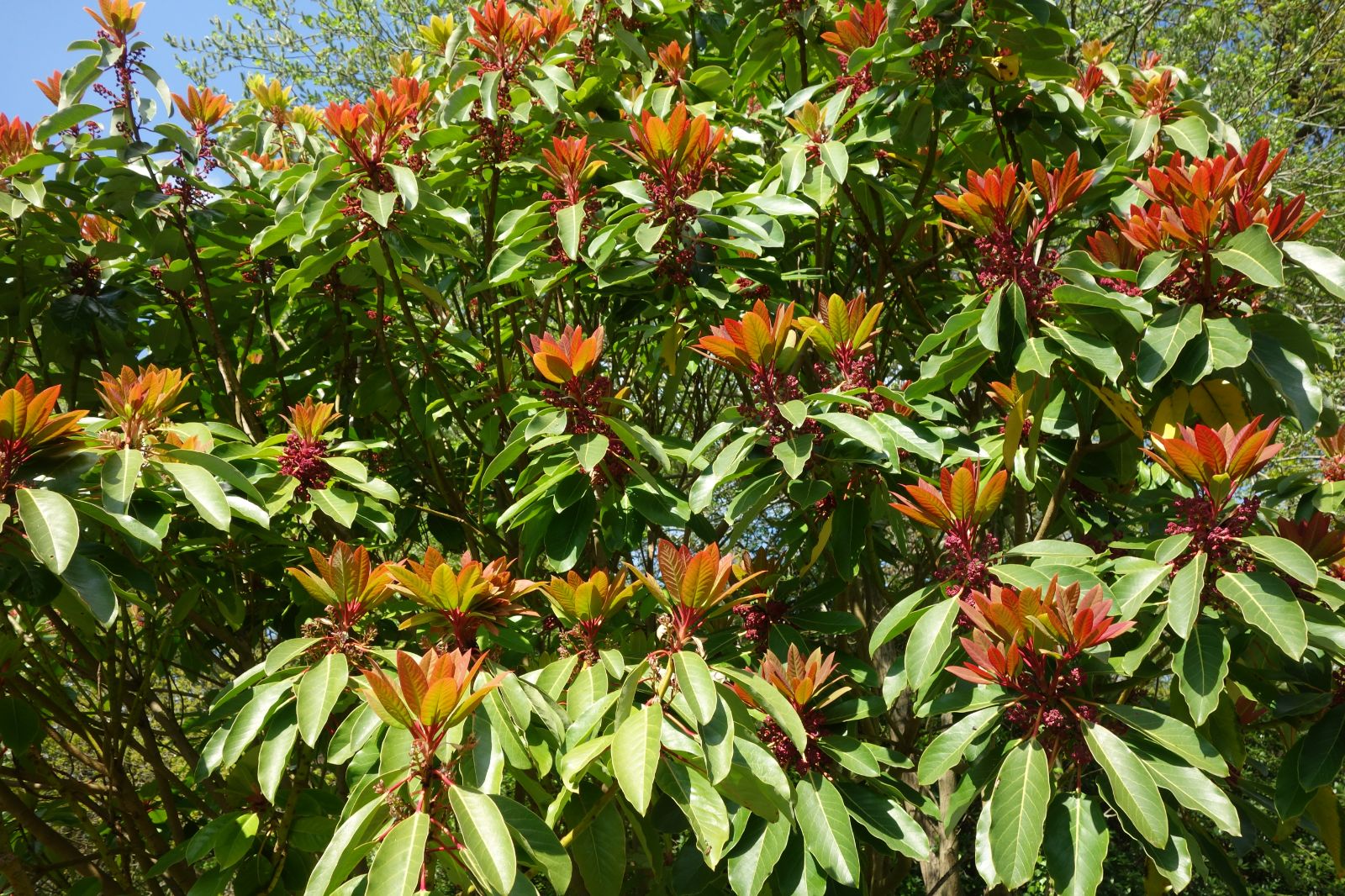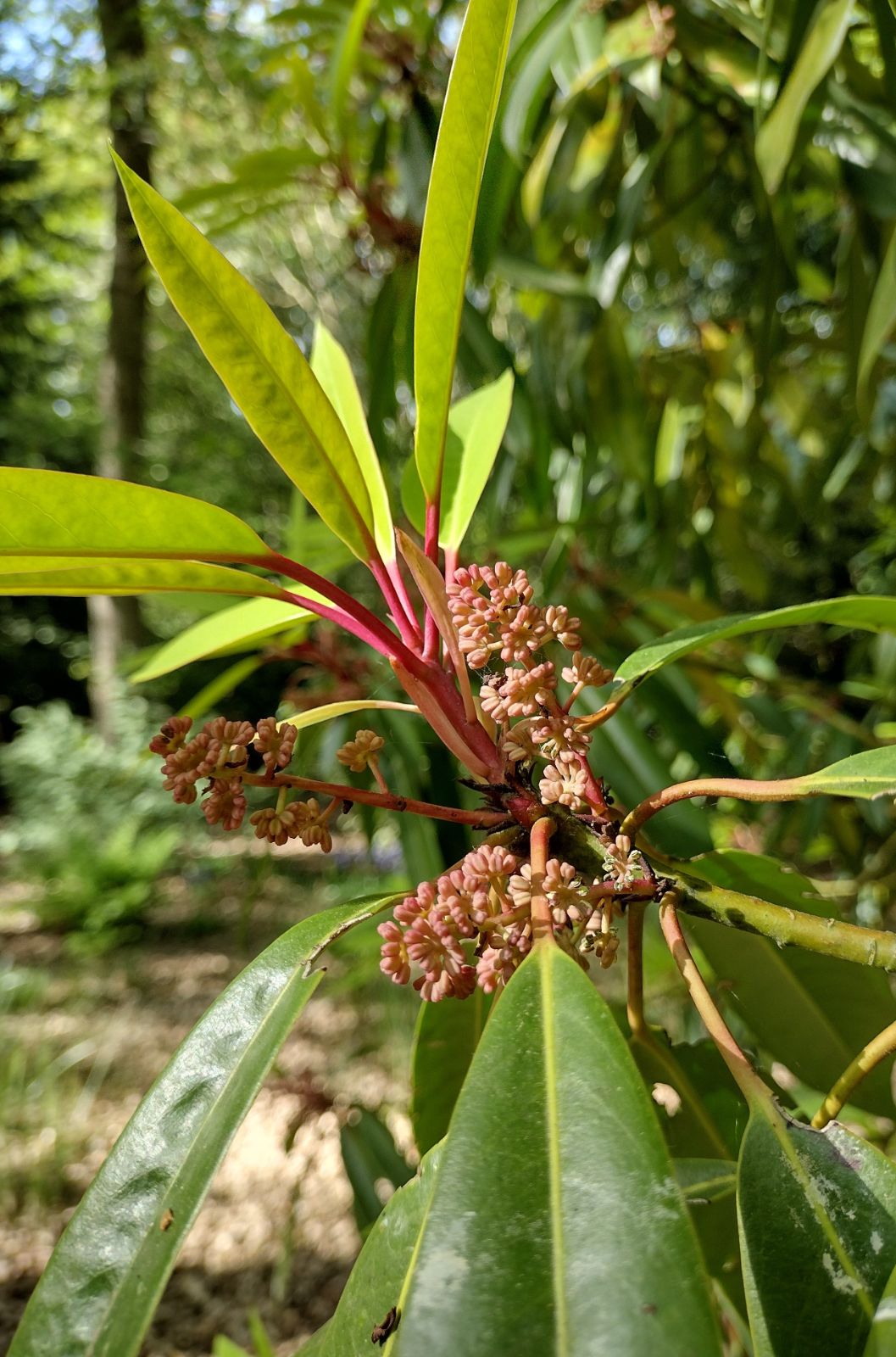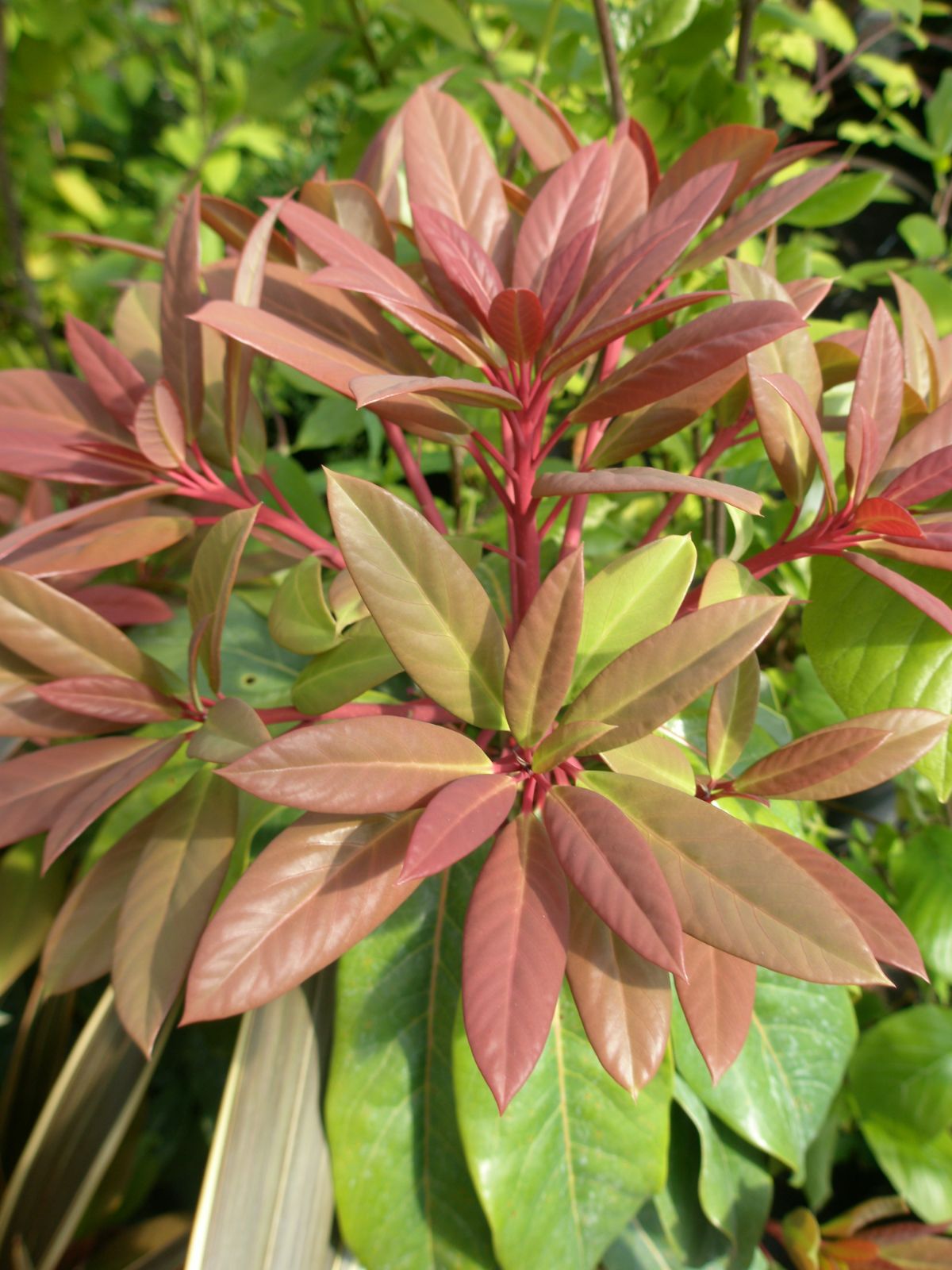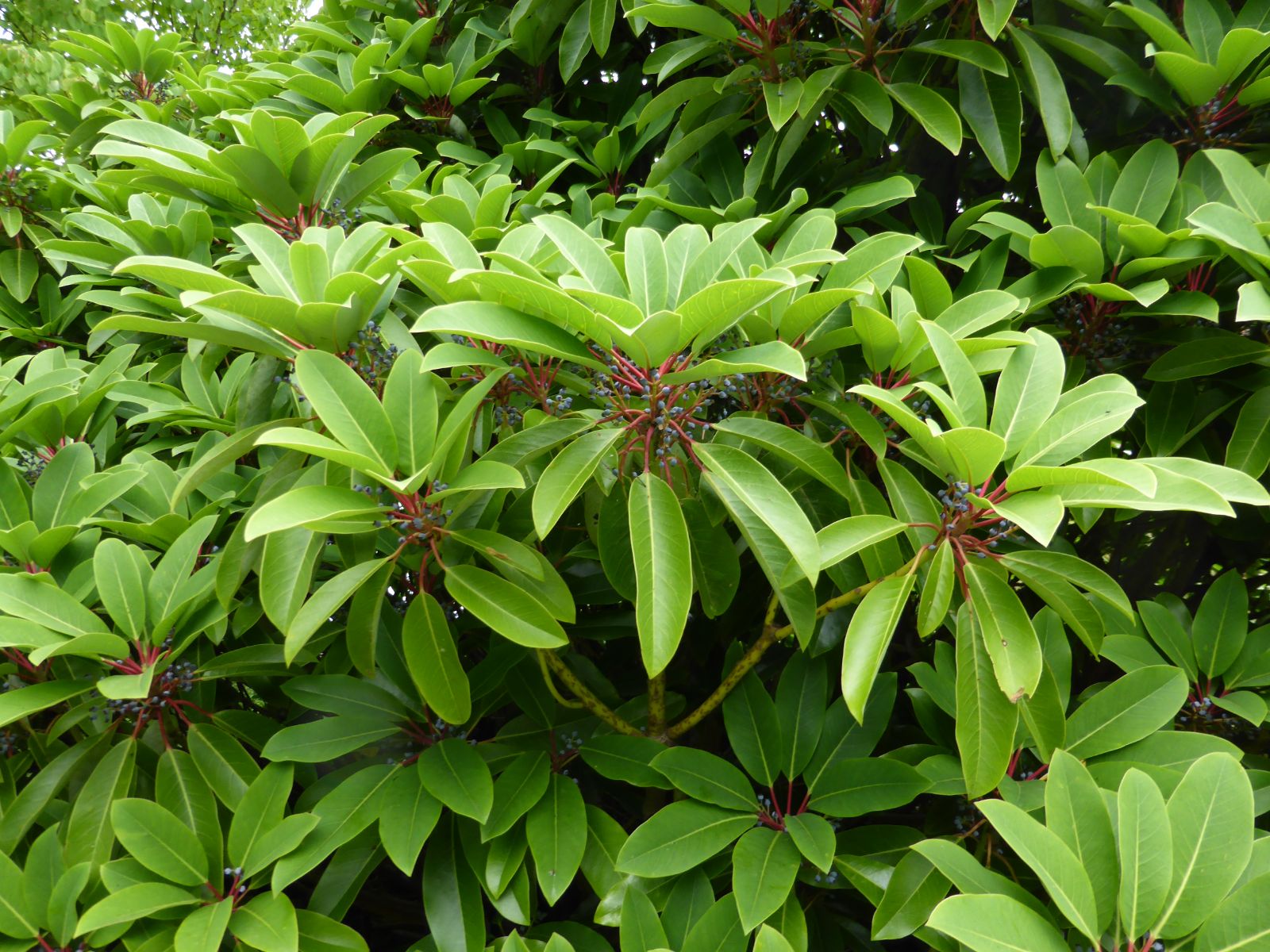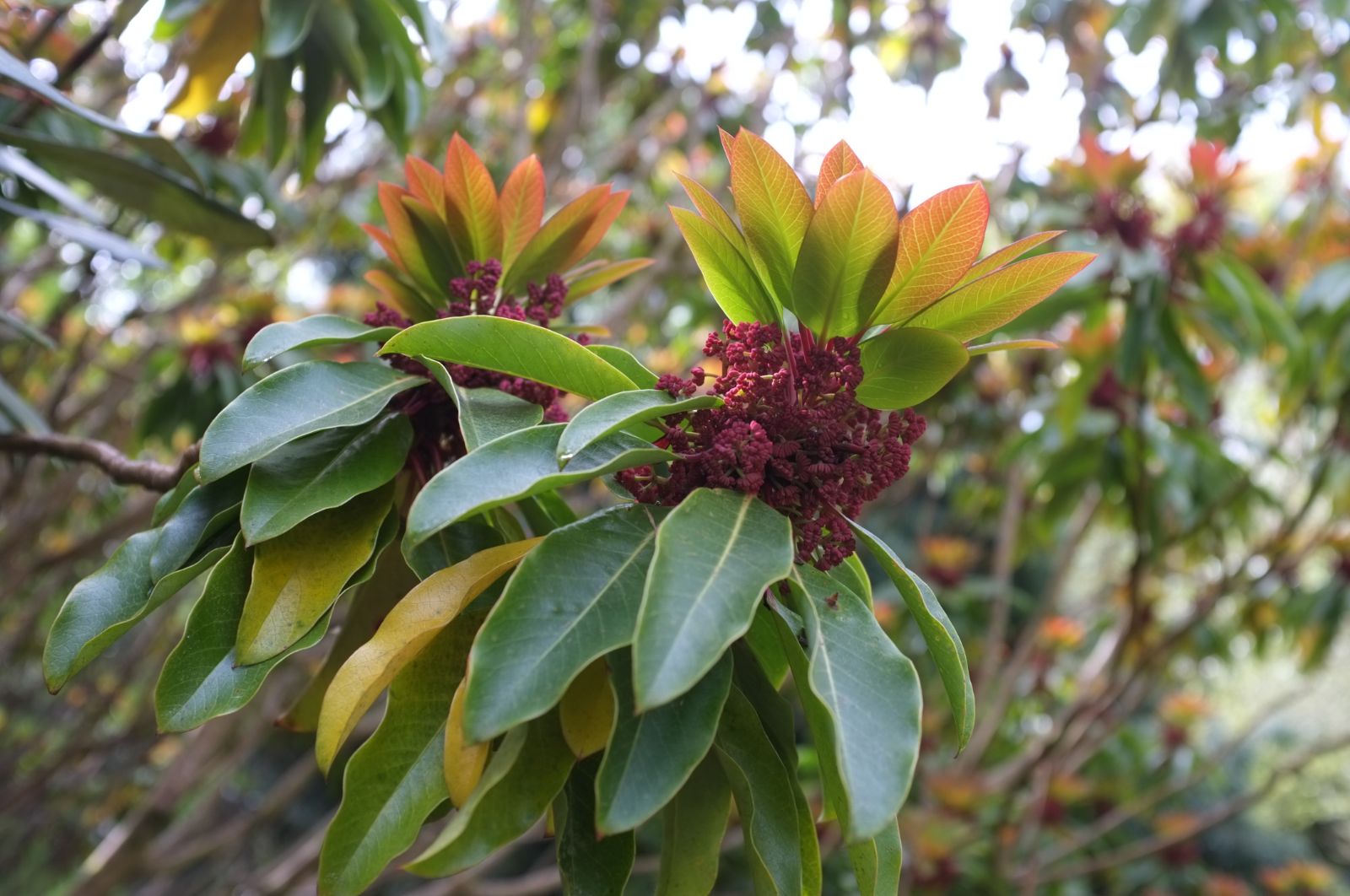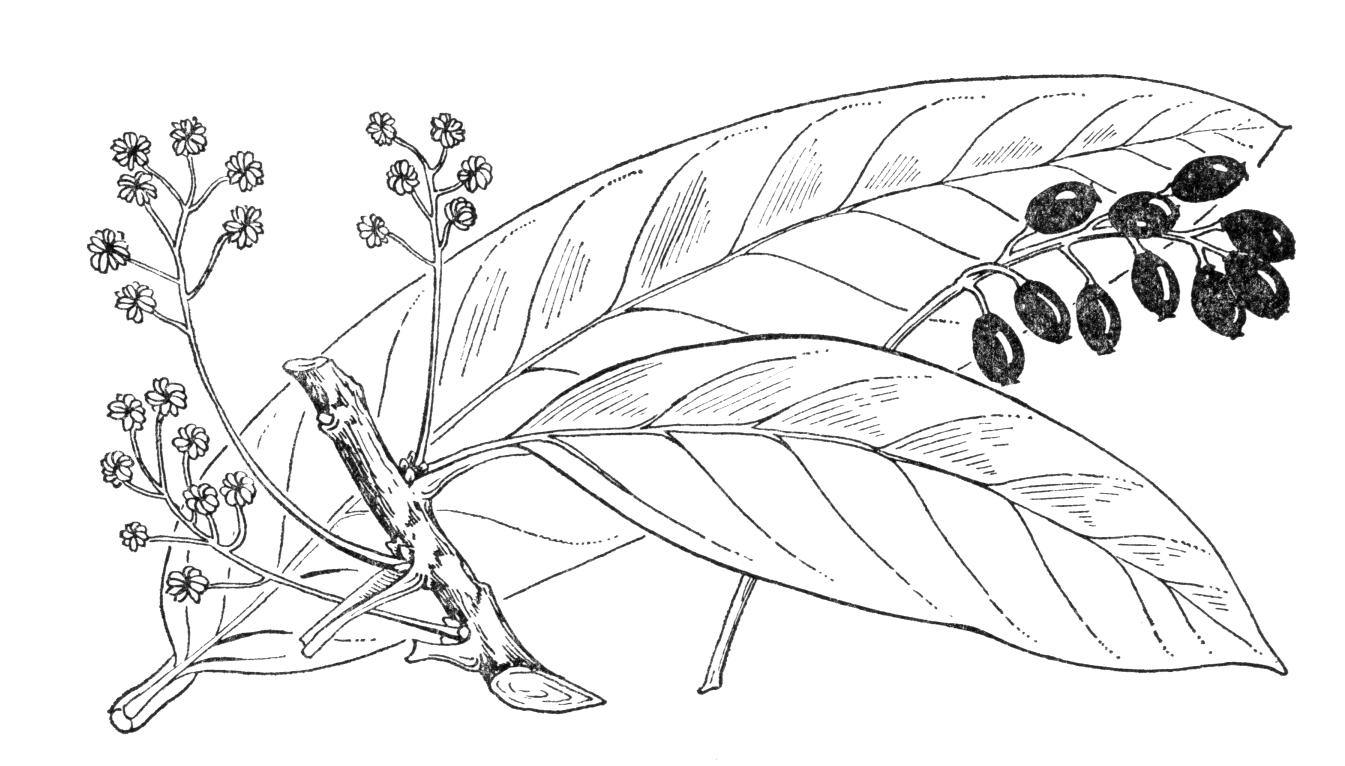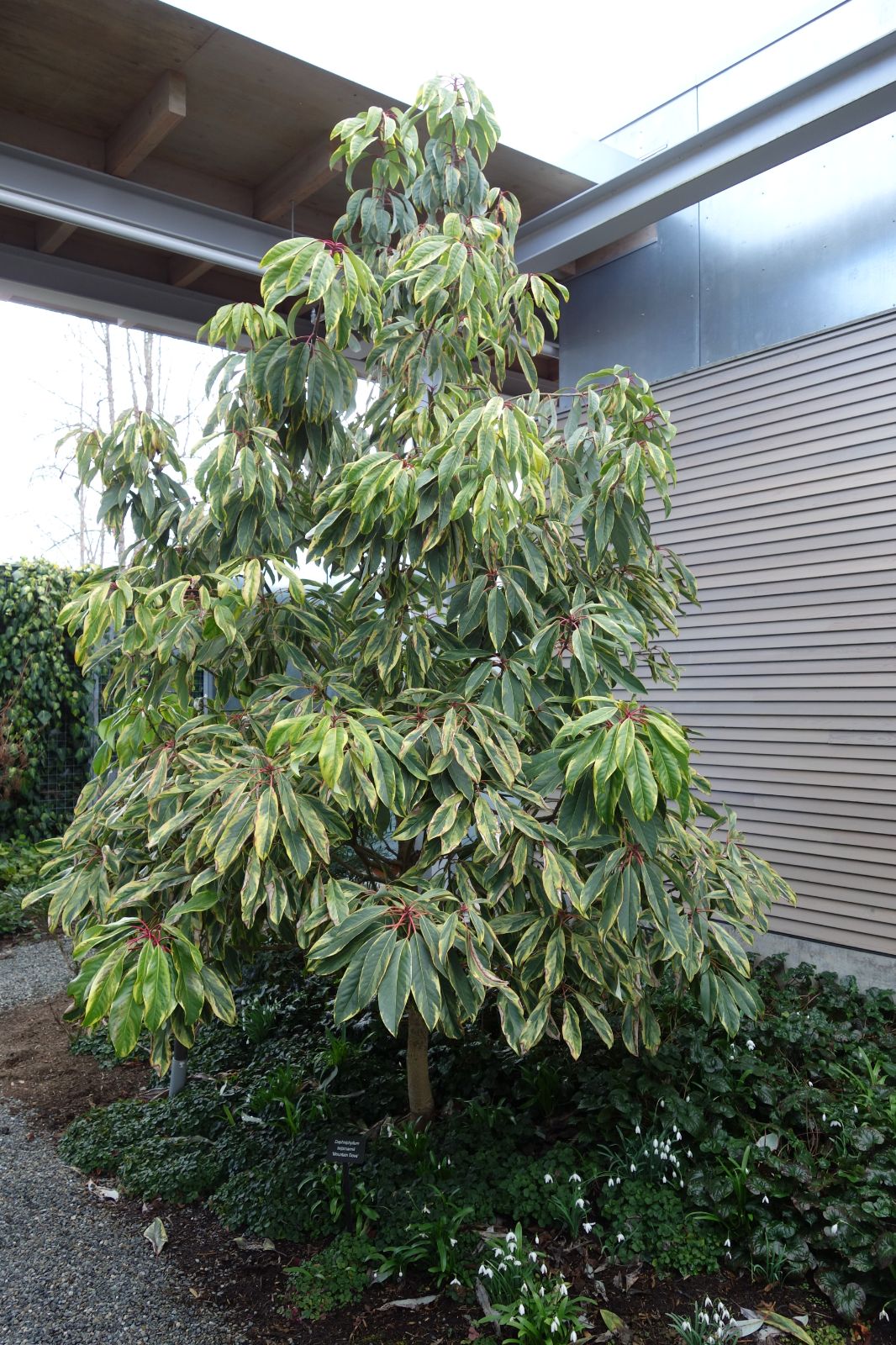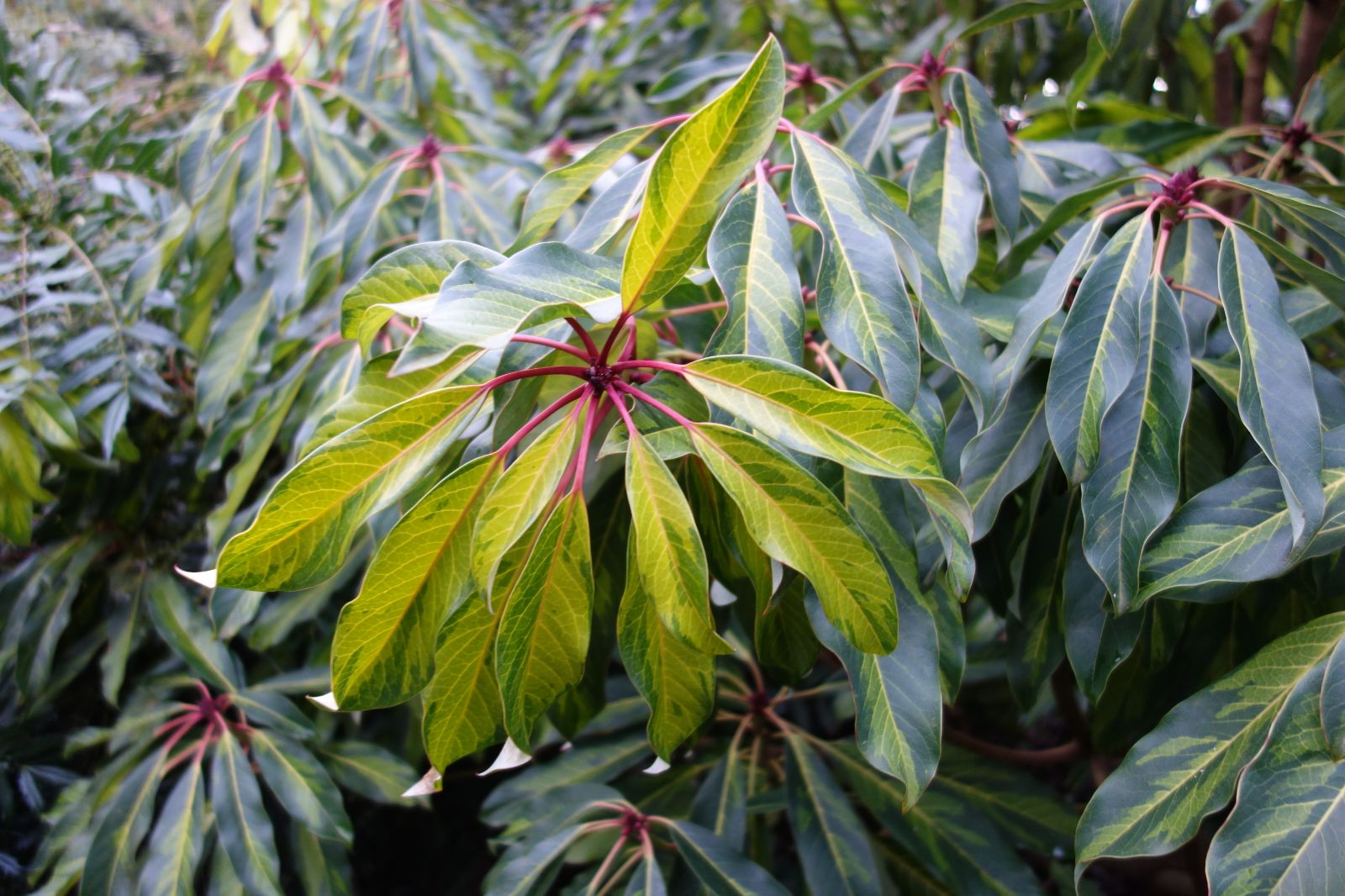Daphniphyllum macropodum
Credits
Article from Bean's Trees and Shrubs Hardy in the British Isles
Recommended citation
'Daphniphyllum macropodum' from the website Trees and Shrubs Online (treesandshrubsonline.
Genus
Synonyms
- D. glaucescens Hort., not Bl.
Infraspecifics
Other taxa in genus
An evergreen shrub of bushy, rounded form at present 8 to 20 ft high in this country, and as much or more in diameter; young shoots glabrous, glaucous, often reddish. Leaves rhododendron-like, 3 to 8 in. long, 1 to 31⁄2 in. wide, oblong or narrowly oval, taper-pointed at the apex, wedge-shaped at the base, quite glabrous, dark green above, glaucous beneath; vein-pairs sixteen to nineteen; stalk 1 to 11⁄2 in. long, stout, often red like the midrib. Flowers small and inconspicuous, pale green, with a strong pungent odour; produced during late spring from the leaf-axils of the previous year’s growth in racemes 1 in. long; bracts and stamens pink. Fruit blue-black, pea-shaped.
Native of Japan; introduced by Maries for Messrs Veitch in 1879. A handsome and vigorous evergreen, becoming in Japan, and perhaps in this country, eventually a small tree. It is quite hardy, having withstood 30° of frost at Kew but nevertheless likes shelter. The red colouring of the leaf-stalks, midribs, and young wood adds to its beauty, but is not always present.
From the Supplement (Vol. V)
This species also occurs in China and southern Korea. It grows taller than stated, the specimen at Wakehurst Place, Sussex, being about 25 ft high.
D. macropodum is closely related to D. himalense (see below) and is placed under it as a subspecies by T. C. Huang in his monograph on the genus (Taiwania, Vol. 11, pp. 57–98 (1965) and Vol. 12, pp. 137–234 (1966)).
† D. himalense (Benth.) Muell.-Arg. Goughia himalensis Benth. – A native of the central and eastern Himalaya, south-east Tibet and northern Burma, ascending in Nepal to about 9,000 ft. Under the typical subspecies Huang recognises three varieties, of which var. chartaceum (Rosenthal) Huang is widespread within the area of the typical variety, though at somewhat lower altitudes, and the other two in Yunnan.
D. himalense, besides being less hardy, is unlikely to be in any way superior to D. macropodum as an ornamental. It is in cultivation in the Temperate House at Kew.
'Variegatum'
Leaves with a broad, irregular margin (sometimes reaching to the midrib) of creamy white; not so hardy as the type.

